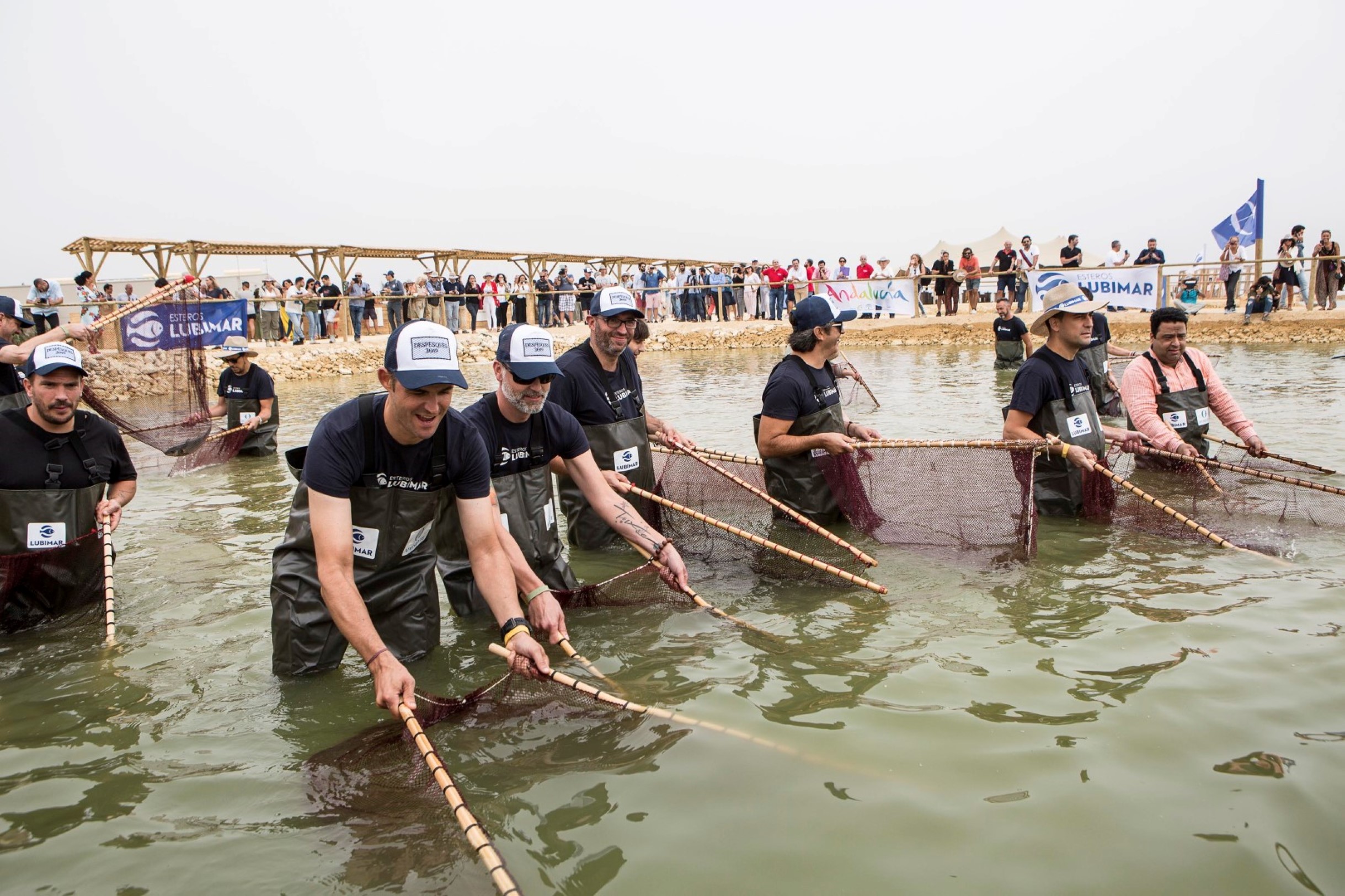Gira tu dispositivo para una experiencia óptima
Gira tu dispositivo para una experiencia óptima

4 días

Naturaleza

Cultura

Cádiz auténtica
Enter your email address and in a few seconds you will have the experience on your mobile so you can see it whenever you want.
We have emailed you the experience; enjoy Cadiz like never before.
Don't you get your experience?
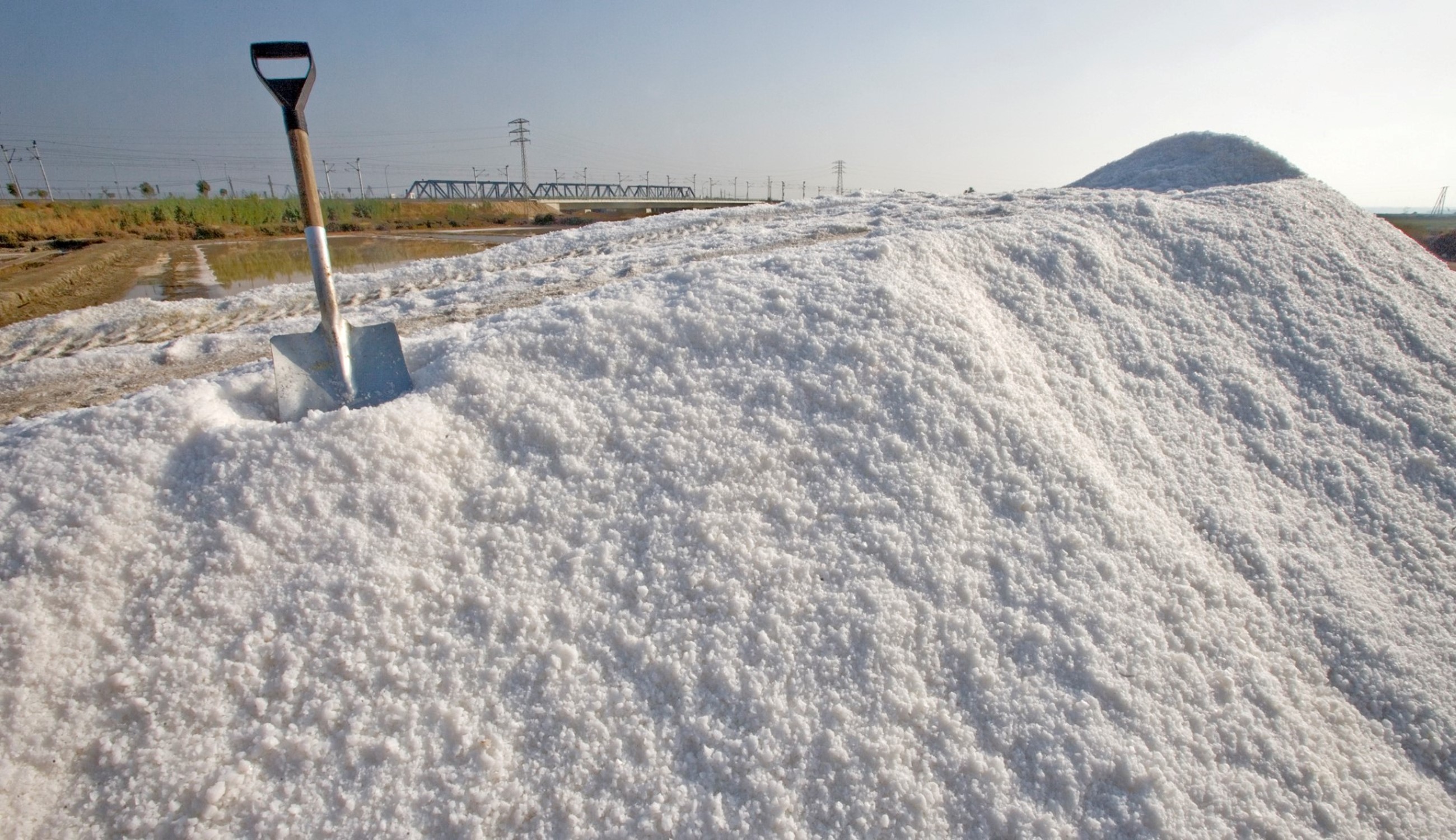
Wetlands, salt pans, beaches, mud flats and pine forests make up the landscape of the Bahía de Cádiz Natural Park. Natural spaces that are both the cause and consequence of human activity, and that have made one of the most important coastal wetlands in Europe. We propose that you discover the traditions, culture, gastronomy and nature linked to two of the culinary jewels of the province: salt and fish from the local lagoons.
You can do this trip anytime in the year, since the focal points of interest along the way are the landscape, nature, local culture and gastronomy. At the same time, we would suggest doing it in November because it's the month for lagoon fishing and you'll have the chance to sample the fish. Make sure that you stuff everything you need in your rucksack for these four days: comfortable clothes and footwear, water bottle, sunscreen, hat and binoculars. We're going to do some hiking and if there's one thing that makes our walks stand out, its the gentle terrain and the lack of shade. You'll soon see why.
Start the day early if you can. You're going to see one of the most important natural sites of the Bahía de Cádiz park: the saltpans of Carboneros in Chiclana de la Frontera. The route is clearly marked, low difficulty, circular and about 5 km in total. First you cross a small area of stone pines. The route itself starts after you cross the Carboneros stream. You then walk through an abandoned salt pan and its lagoons (large deposits of sea water). One of the first things you'll see are several different species of birds, such as avocets, stilts, Kentish plovers, common kingfishers and one of the largest populations of flamingos in the Bahía de Cádiz. If you take the shorter route, you'll be back at the beginning in about two and a half hours, before the midday sun starts to bite.

Inserta aquí una nueva sección
Now it's time to get your strength back before the next trip. We'd recommend a snack at the Tetería Medina de Tetuán (Calle Fernando Magallanes, 18), a quaint place decorated in Moroccan style where you can try the best in hand made pastries and Arab cuisine. Don't go without trying the gazelle horns.
Then head off for the salt pans of Santa María de Jesús. You can get there by car right up to the door, via a dirt track alongside the banks of the river Iro. In just a few minutes you'll reach your destination on the right. This old restored salt pan is now the Environmental Resources Centre (CRA) of the Salinas de Chiclana. It offers a wide range of things to do for all the family: from a museum to a viewing point, including a shop where you can buy salt collected by hand from the salt pan itself and locally caught fish.
A walk around the facilities is free, although there are also guided visits for two or more people that you can reserve beforehand. If you're there in summer, don't go without trying one of the treatments on offer at the Spa Salino (only in the summer season and with a reservation: 667 664 844 / 670 465 909). There's nothing better than a good salt exfoliation, being wrapped in seaweed or a mud batch and a relaxing massage in the middle of the Bahía de Cádiz natural park. Sounds like a great idea for after lunch. So, don't hang around, reserve a table in the spa restaurant (better if you reserve beforehand), and sample the products taken from the saltpans and lagoons with the stars of the menu: rice with seaweed, sea bream croquettes, lagoon oysters... well worth sampling!
See route in map Google Maps

With your skin nice and smooth and freshly exfoliated, what could be nicer than some almond pastries at the coffee shop Hornos La Española (Calle La Plaza) or a cup of chocolate and churros that have made the place rightly famous. If it's very hot, a home-made ice cream is a good option. You can park your car in the blue zone in the centre or at the car park in the Plaza de las Bodegas and spend the rest of the afternoon and evening on foot.
Near the Plaza de Las Bodegas is the Centro de Interpretación del Vino y la Sal. It's a space given over to disseminating and transmitting more about these two traditional resources of the local economy and gastronomy. You'll find audiovisual and interactive resources, photographs and information panels that will help you to understand the origins of the local saltpans, the value of salt produced using traditional methods, the difference between the types of hand made salt (virgin marine, salt flakes and fleur de sel), and the intrinsic relationship between these natural spaces and their flora and fauna. It's open morning and afternoon from Tuesday to Friday. Saturdays it only opens in the morning. Entrance is free.
For dinner, no need to leave the town centre, the Marisquería Manguita offers the best in selections of fish and seafood from the lagoons. The Mesón Lorena, not only offers lagoon fish (in season), but also has other excellent traditional cuisine such as fried fish and grilled meats.
See route in map Google Maps
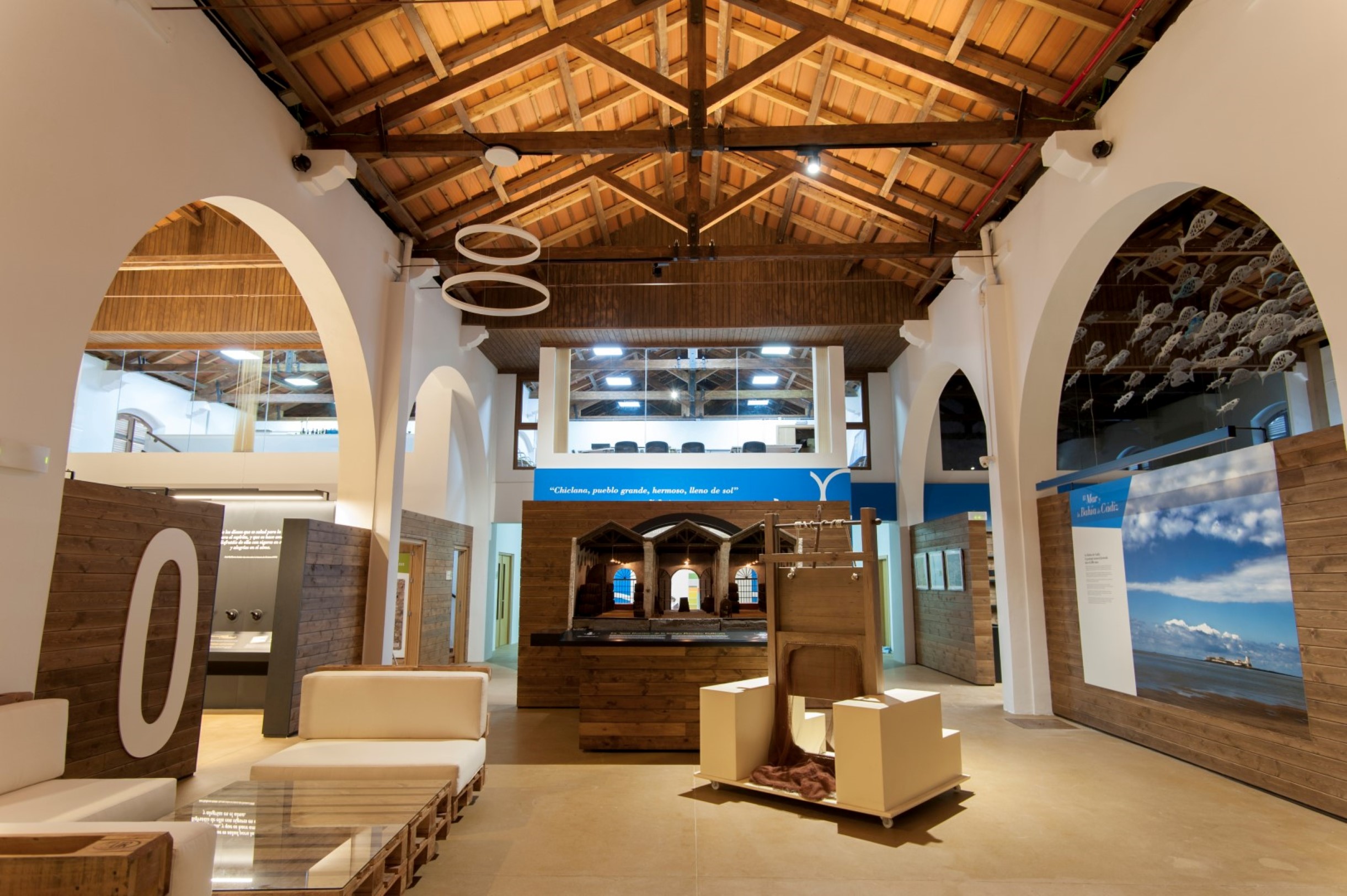
Ready to continue the journey? Drive along the A-48 up to the exit at Tres Caminos and follow the signs to San Fernando Sur. The landscape will look familiar. Wetlands, streams, saltpans, lagoons. And so, it should because all this is a natural park too! There was a time when the Bahía de Cádiz was home to more than one 140 salt pans. They were in business up to the mid 20th century, when they were no longer profitable. Some still battle on, such as Bartivás (their salt with chimichurri sauce delights many a palate) and others are being restored by linking salt production to eco-tourism, R&D projects and scientific research.
For example, the salt pan of San Vicente has diversified operations and has a nice venue for celebrations. You can visit it if you go in a group. If not, you can always pass by the shop there and buy one of its varieties of salt.
Head towards the visitors centre of the Bahía de Cádiz natural park. There you'll find resources that will help you to understand the close relationship between the wetlands, human activity and the riches of the ecosystem that was generated around them. Entrance is free. You can also reserve a guided visit or sign up beforehand for one of the many activities that take place at the facilities throughout the year (concerts, talks, children's workshops. etc.)
See route in map Google Maps

Now head off toward the Ronda del Estero and park your car near where it meets with Avenida de La Constitución. We'd like to show you the monument to the Salinero (salt maker), so you can get an idea of how important salt has been to this city. The links between San Fernando and the salt pans is such that local traditional dress is inspired by the clothing that men and women used to wear to work in the salt pans.
From here you can take one of the circuits of the El Carrascón route. The complete route takes about two and a half hours (one hour out and one back), along the side of the stream that gives the route its name, amongst salt pans, abandoned salt makers' houses and lagoons that are still functioning. There are several access routes at right angles from the Ronda del Estero. You'll take the entrance that's right at the Ronda and walk towards the stream of El Zaporito.
If your shadow doesn't frighten them off, you'll see a lot of crabs and see why birds love to come here to eat. You'll pass next to some lagoons where fish and shellfish grow naturally (bream, mullet, prawns, shrimps, etc.). As you already know, the saltpans and lagoons go hand in hand. But the lagoon of El Carrascón is given over solely to fishing. You'll enjoy seeing the outline of Chiclana from here, on the remains of old dyke of a port and a restored tidal mill at the end of the trail.
See route in map Google Maps.
At the end of the track, you'll most likely be hungry. At Casa La Titi the half portions of fried fish and rice are wonderful (call 956487104 to make a reservation). Casa Pepe also makes spectacular traditional food: fish, seafood, clams (call 956487498 to make a reservation at weekends).
Why not use the afternoon to do some shopping at the Centro Comercial Bahía Sur. Not just because there are lots of shops of all kinds and you can get whatever you like, but also because there's a beautiful promenade with some magnificent views of the Bay and natural park, with information panels. There you can spend the rest of the day, with an evening snack and dinner included. You can even stay overnight here. If you prefer something more central, the city has other hotels available: Consúltalos aquí.
See route in map Google Maps
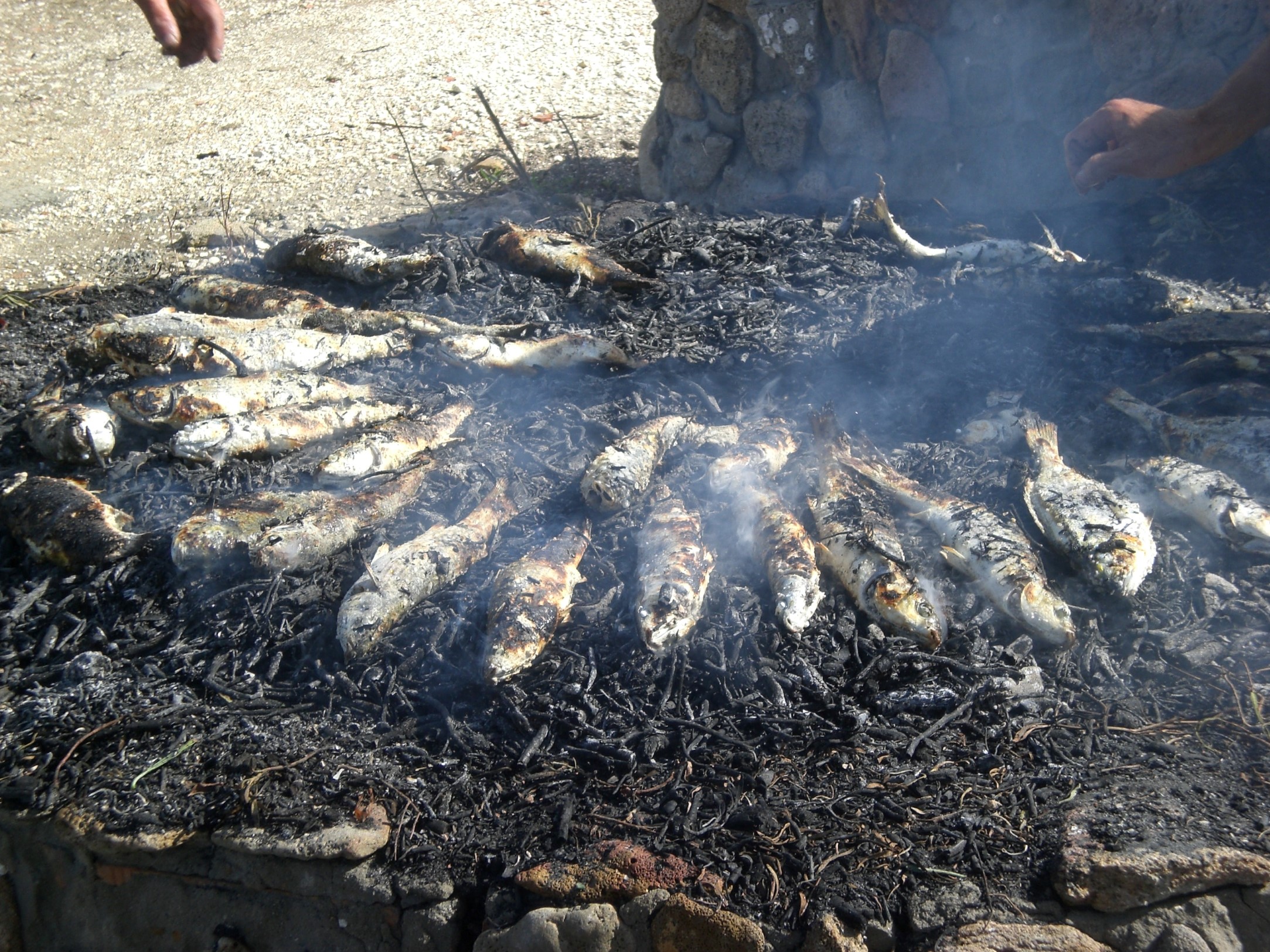
Today we're off to Puerto Real. Your first stop will be the saltpans of La Esperanza. It's managed by the University of Cádiz, which is engaged in recovery, research and environmental education projects there. Another reason for stopping here is because it's an obligatory stopping point for bird lovers. Eighty percent of the pairs of Kentish plovers in the natural park have chosen this area to nest. At the end of the public trail, there's a viewing point from where you can also see little terns, spoonbills and other species common to this park. If you want, you can enter the saltpan and continue with the visit: guided and unguided visits are both available. Contact the organisation that manages the area at [email protected].
Then set off along the Puerto Real ring road of towards the beach of La Cachucha. Park nearby or at the Paseo Marítimo, because from here on the route is on foot. La Cachucha is a small urban family beach, with wonderful views of the interior part of the Bahía de Cádiz. If you fancy, have a dip. Then for lunch head up to the restaurant 'Balneario Beach'. The menu has fresh and seasonal products such as clams, prawns, and fish from the lagoons, shrimp cakes, rock samphire...
See route in map Google Maps
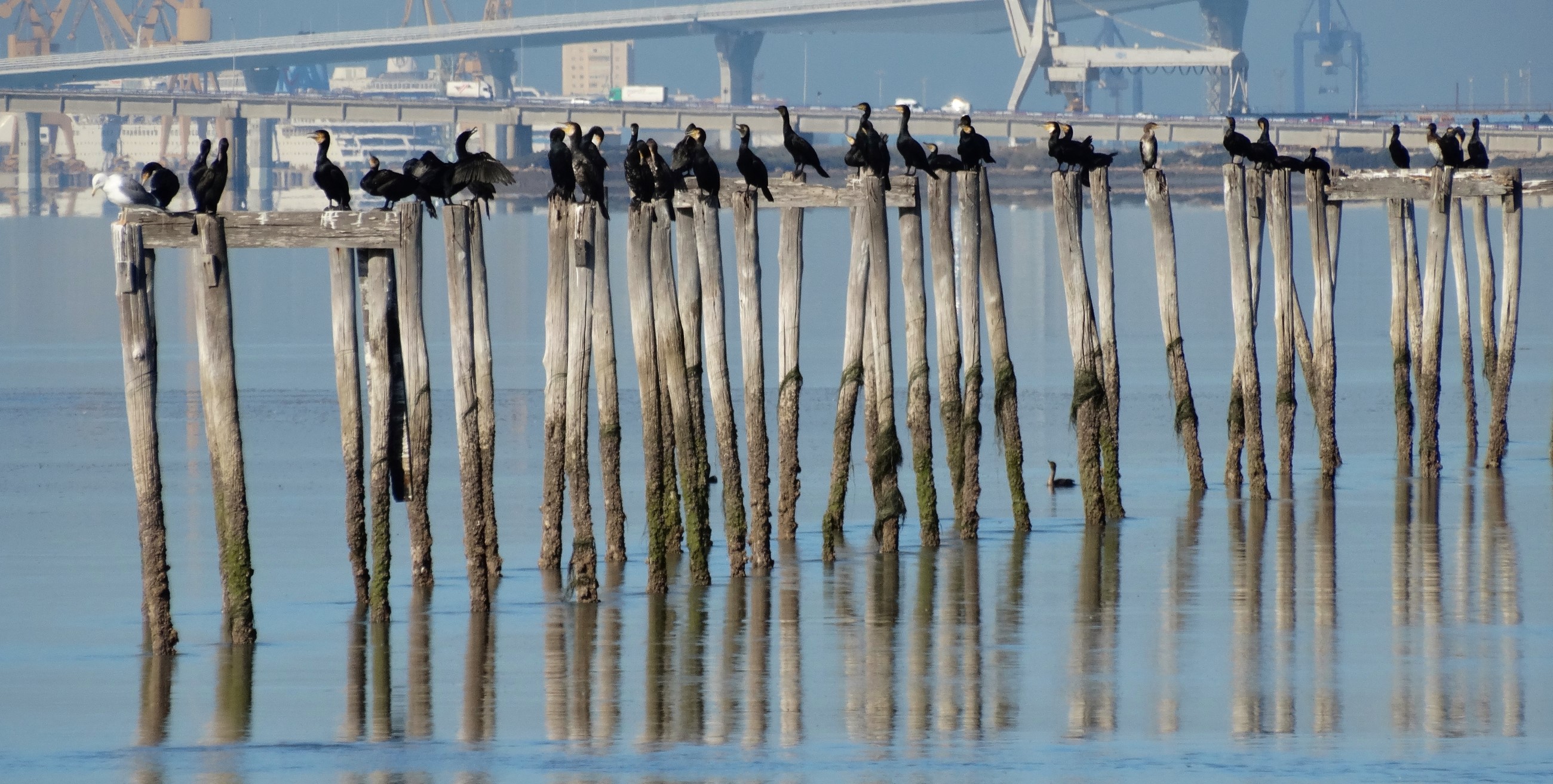
In the afternoon we'd recommend taking a walk around the town centre, to see some of its heritage and regional architecture. The Teatro Principal (1859) is the second oldest continuously running theatre in Andalusia. In the Plaza de Jesús you'll find the Casa Consistorial. In its day it was one of the most important houses of the nobility in the town. If you go down Calle Real, you'll come to the church of San José (18th c.), a building declared to be an Asset of National Interest, and which has been deconsecrated and is now an interpretation centre of the Culture of Puerto Real. Entrance is free (open Tuesday-Friday morning and evening; weekends, public holidays and summer; mornings only).
Take a rest and have an afternoon snack at La Trufa pastry shop and carry on from there to the Iglesia Mayor, the oldest and largest church in the city. It dates back to the 16th century and the arrow slits in the Tower give you an idea of its use a defensive feature of the town.
For dinner you can go to the Los Esteros restaurant, which gets its name for obvious reasons (estero-salt lagoon). Now it only opens at weekends. Call 6558089440 to make a reservation. If you prefer somewhere closer to where you left your car, go to the Fogón del Guanche, the Tabanco del Teatro or any of the bars and restaurants on the del Paseo Marítimo.
To stay overnight, you can find a number of options available at the municipal tourism website web municipal de turismo.
See route in map Google Maps.
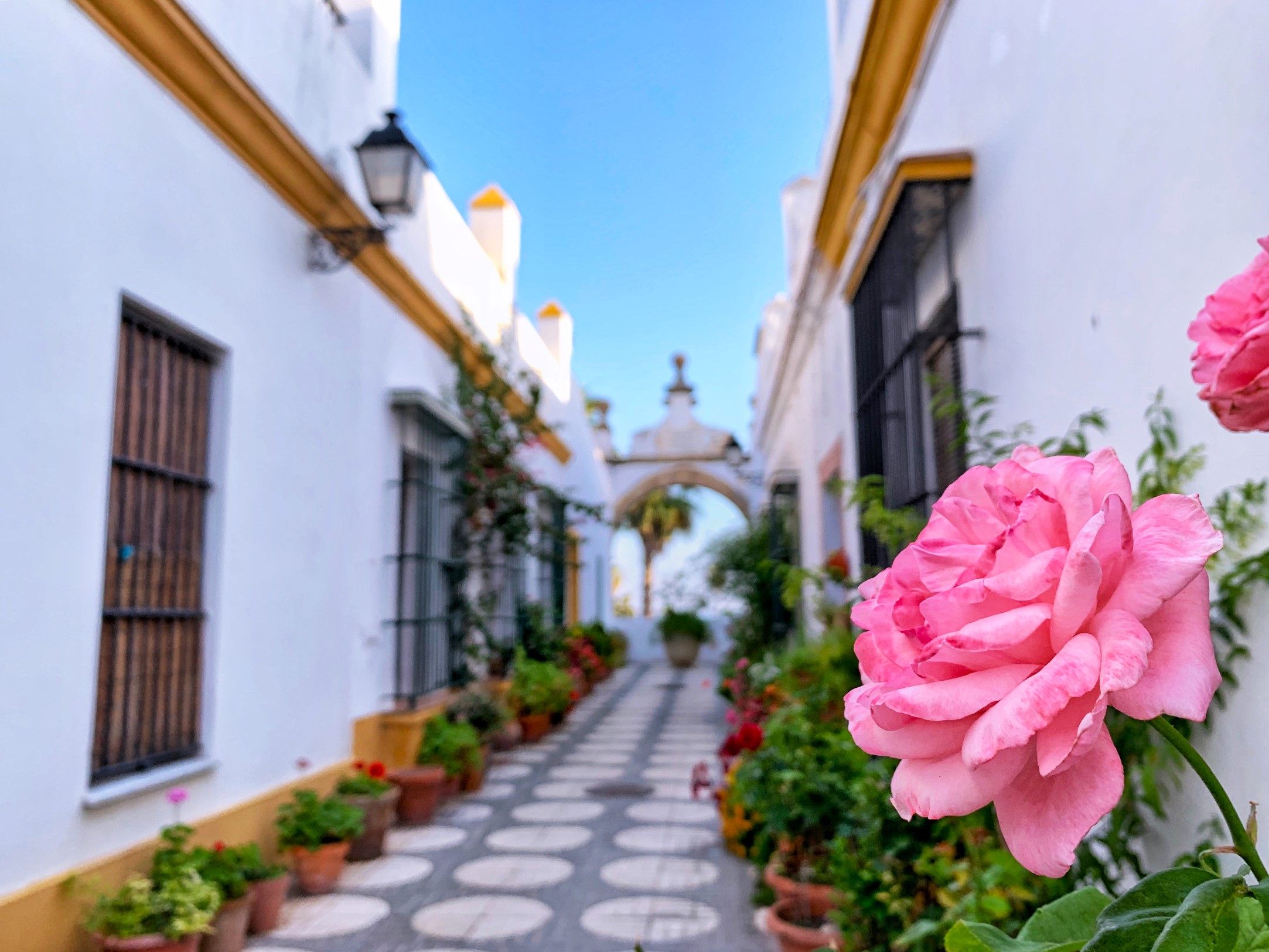
Today, have a big breakfast because this morning you're going to need calories to burn off. Our journey through the saltpans and lagoons takes you today to El Puerto de Santa María. Drive along the CA-32, heading towards Valdelagrana. You're off to the Visitors Centre of La Casa de Los Toruños. We've reserved some off-road scooters for the next route (call 645 479 027 to reserve bikes and scooters).
The idea is to go by scooter on the trail of the outer circuit of the Salina La Tapa y Marivélez, one of the most important industrial saltpans in the province. It's a circular route and an easy one, like all the ones in the Bahía de Cádiz natural park. When you compare these saltpans with the ones you've seen so far, what you might find striking is the reddish colour of the water. The sunrises and sunsets here are really impressive. The colour of the water is due to the presence of micro-algae and bacteria that have red pigments. Small long-tailed shrimp feed off them and so absorb the pigment into their organism. And then guess who feeds off the shrimps and takes on a pinkish colour? Absolutely right, the flamingos! There are in fact a large number of flamingos in this area, along with other birdlife typical of this kind of ecosystem: avocets, little terns, Kentish plovers, yellow-legged gulls, egrets and spoonbills make their home here. Other species such as the osprey and lapwings come here to feed.
After the walk, go back to the Casa de Los Toruños. There you can return the scooters and set off for the jetty. You can spend some time in a kayak on the river San Pedro. Very simple and very refreshing. As you paddle, you can see Los Toruños on one side of the riverbank, which are of great ornithological value and which consist of dunes, wetlands, streams and the flora and fauna associated with areas like this one. On the other side you'll see the saltpan of Nuestra Señora de Los Desamparados, which has been converted in to an aquiculture farm.
See route in map Google Maps.
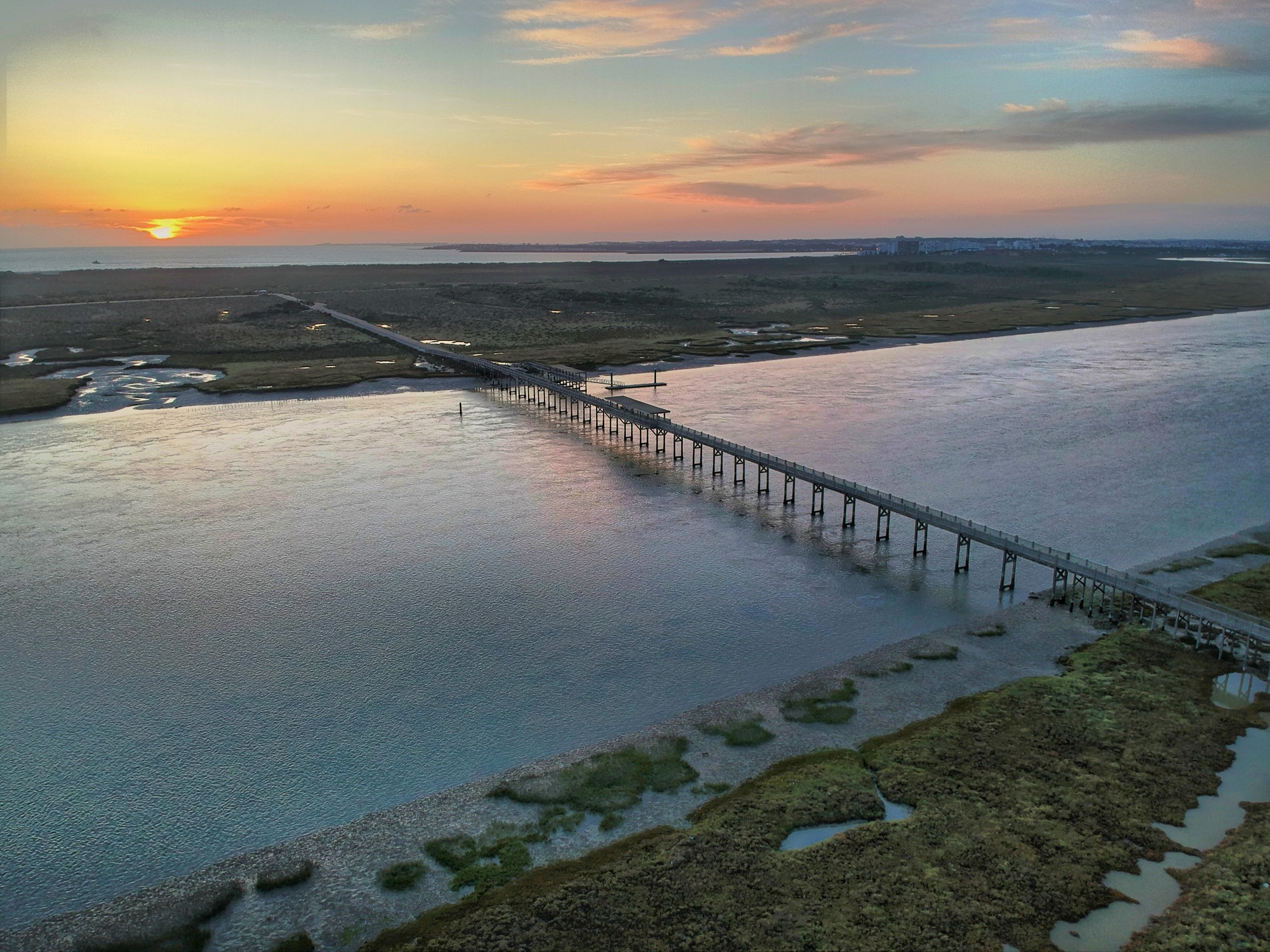
You can stay there and have lunch at the Sale et Sole restaurant. The current owners (La Sapina) prepare food from the land, vegan cooking and seasonal fish caught in the lagoons. Or perhaps you'd like to go to the next stop, park the car and leave it there for what's left of the day. Go to the Ribera del Marisco and stop at La Taberna del Chef del Mar, the first restaurant of Aponiente and the place where Ángel León earned his first stars. The food here has the unmistakable stamp of port food, but with a rough edge, Leon says. You have to make a reservation at https://latabernadelchefdelmar.com/#reservas . Bear in mind that in summer it closes on Sundays, and on Sunday evenings and Mondays the rest of the year.
In the evening, we'd suggest carrying on with the walk next to the mouth of the Guadalete up to the beach of La Puntilla. Just think that these waters have completed a journey of over 150 kilometres and you're the final witness of its end. Or maybe the beginning? Such profound thoughts deserve a hand made ice cream from the Da Massimo ice cream and frozen yoghurt shop. Their creations will amaze you: hand made almond biscuit ice cream, Payoyo cheese, sea sorbet...
Now you're on the beach, enjoy a magnificent sunset, with the city of Cadiz as a backdrop. For dinner, you can go to any of the bars and restaurants nearby. And surely by now you'll understand the inspiration behind the composition "Las Salinas" written by the local composer, Felipe Campuzano in the introduction to this piece, who says, “It is what remains of the sea when the sea decides not to have exact limits, but rather an ineffable flavour”.
See route in map Google Maps.
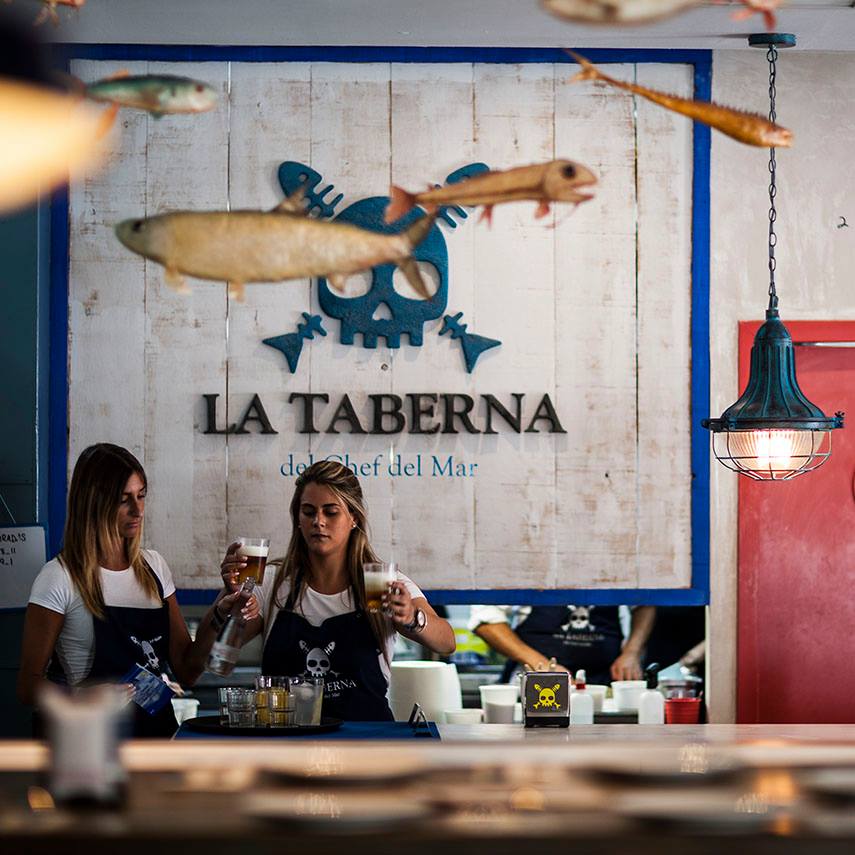
| Kilometres: 40 km. |
| Estimated driving time: 1 hour |
| Recommended number of days: 4 |
| Attactions: Culture and nature |
| See route in map: Google Maps |
